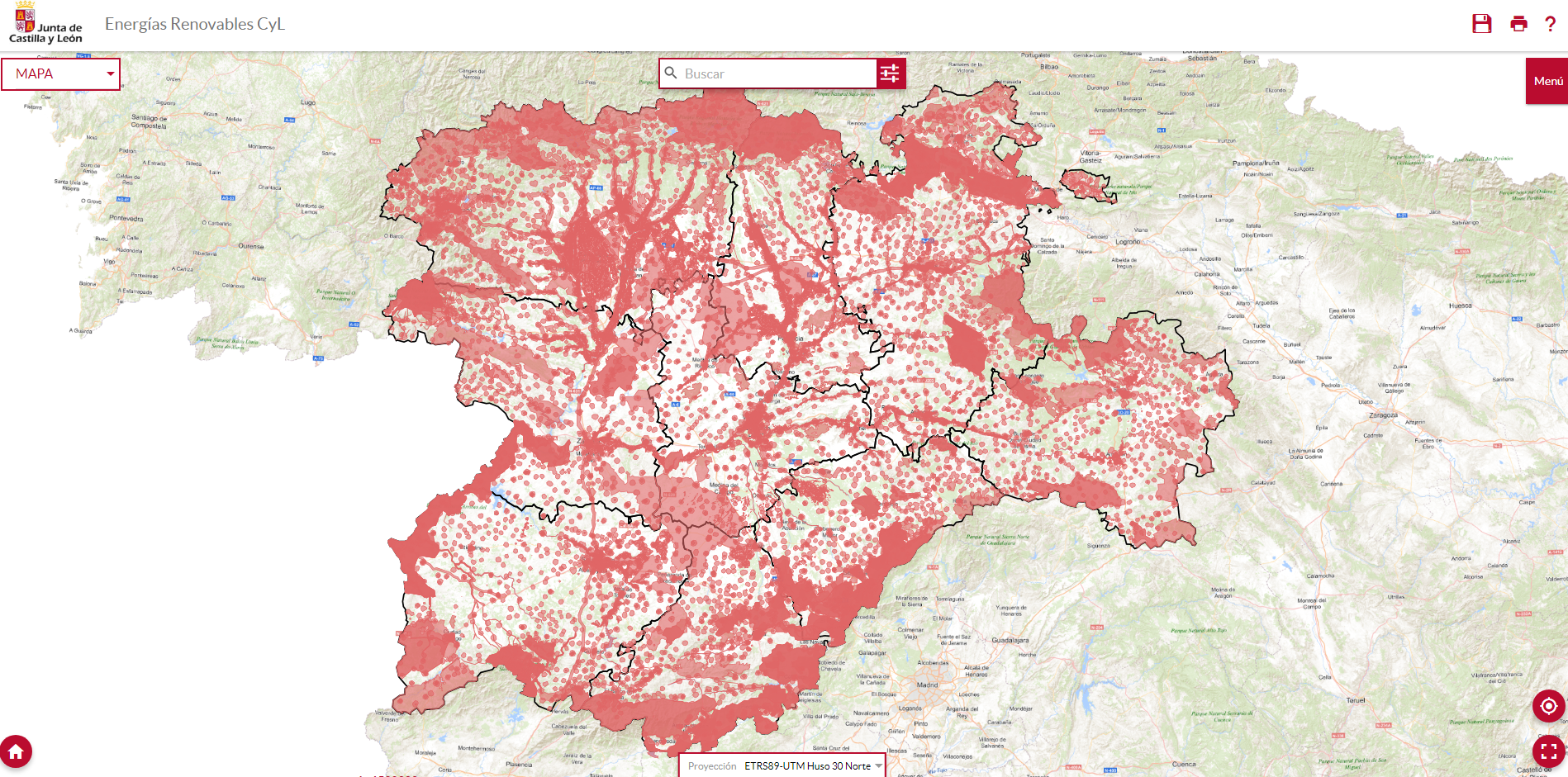IDECyL: Exhaustive information on the areas banned for the installation of wind farms
Over the recent years, Spain has become strongly committed to wind energy which is a safe option that enables to lessen its dependence on fossil fuels. In fact, sustainable wind energy has become one of the main sources of renewable energy in the country, however, the installation of wind farms is restricted in certain areas that are considered to be Protected Natural Areas.
In the Spatial Data Infrastructure of Castilla y León (IDECyL) it is possible to view the orientative cartography of the land on which renewable energy installation projects and their auxiliary infrastructures can be authorised, in accordance with article 13 of the "Decree-Law 2/2022, of 23 June, adopting urgent measures to streamline the management of European funds and boost economic activity" (BOCYL 24.06.2022).

Specifically, all the conditions of article 13 of the DL 2/2022 have been taken into account in drawing up the list, with the exception of "other public service facilities located on rural land", which will have to be analysed on a case-by-case basis.
The following criteria have been taken into account to delimit the exclusion zones for wind farms: the network of Protected Natural Areas, except in protective mountains and those catalogued as being of public utility; critical areas of protected species with a conservation or recovery plan; a distance of less than 500 metres from an asset of cultural interest; a distance of less than 1,000 metres from urban centres; a distance of less than 1,000 metres from educational, health and social-health centres located on rural land; and irrigated areas. The IDECyL provides access to all the cartographic information for viewing or downloading.
In this regard, AIR Institute is currently running the IA4Birds project, which is supported by the Biodiversity Foundation of the Ministry for Ecological Transition and the Demographic Challenge (MITECO) within the framework of the Recovery, Transformation and Resilience Plan (PRTR), financed by the European Union - NextGenerationEU. The fact that AIR Institute is responsible for the implementation of this project makes geographical and practical sense, since, according to data from the Spanish Wind Energy Association, Castilla y León is the region with the highest number of wind farms and installed capacity. IA4Birds is a diagnostic tool based on bird identification and monitoring. Moreover, external sources of information will be used to create a common database for an optimised evaluation process of wind energy projects, thus improving decision making and biodiversity management in the fight against climate change.